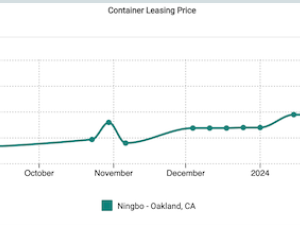Europe set for compliance chaos with new ship fuel sulphur rules
By: Reuters | Jun 20 2014 at 07:06 AM | Liner Shipping
Northern European regulators will face a battle with many shipping companies over new EU rules aimed at cutting pollution from ship fuels as some owners are likely to find it cheaper to pay fines than to comply.
Ships are typically powered by heavy fuel oil or bunker oil, both of which produce harmful pollutants such as sulphur dioxide which can cause respiratory and heart problems.
Such fuels contain 2.5 to 3 percent sulphur on average, which is up to 3,000 times the sulphur content of road fuel in Europe, according to marine campaigners Seas at Risk.
Under EU rules from Jan. 1, 2015, all ships operating in the North Sea, Baltic Sea and English Channel will have to use a fuel with a maximum sulphur content of 0.1 percent.
Ship owners can comply by changing fuels, such as to low-sulphur marine gasoil, which can cost four times as much as high-sulphur bunker fuel.
Or they can use bunker fuel and fit a “scrubber”, a technology that filters out pollutant gases before they are released into the atmosphere.
This costs as much as 3 million euros ($4 million) for a small vessel - often more than the value of the ship itself - and as much as 12 million euros for a larger ship, and it could take up to two years for every ship to be fitted.
Another option is to use liquefied natural gas (LNG), but ships would need expensive retrofitting, and there is not yet a reliable supply chain in place for LNG.
“Neither of these options (scrubbers and LNG) can easily be deployed by January 2015,” the International Energy Agency said this week.
COST OF COMPLIANCE
Many shipping firms have complained about the costs of meeting the regulation, saying it will damage competitiveness and lead to job losses.
All ships worldwide, however, will be subject to a limit of 0.5 percent sulphur content in fuels by 2020 under rules by the International Maritime Organization, which are still subject to a feasibility review.
Maersk Line, the world’s biggest ship container group, said switching to low-sulphur fuel under the EU rules will cost it an extra $200 million a year. P&O Ferries’ fuel bill will rise by 30 million pounds ($50 million) a year, which it said it would pass onto customers.
“On longer routes fares will need to rise more than on shorter ones to cover the greater increase in fuel costs,” P&O Ferries Chief Executive Helen Debbie wrote in a letter to staff, which was seen by Reuters.
There is also the risk that some firms will find it cheaper to pay fines for not complying with the limits than pay upfront capital costs to change fuels or fit technology.
“The potential for not following the regulations is there, because you can save a lot of money. It is so significant that over time companies in compliance may not even be able to compete with companies who are not in compliance,” said Mads Stensen, global adviser on sustainability at Maersk Line.
Britain-based ferry group Red Funnel has been using low-sulphur fuel for 18 years, however, and a spokeswoman said the company has maintained its competitiveness through efficiency improvements.
Apart from the costs, there is also a lack of clarity about how enforcement will work. Each EU member state is responsible for deciding its own methods of enforcement including penalties, according to the European Commission.
Industry sources say many countries have yet to decide on the level of fines, how to monitor the sulphur content of fuel or how often to check ships.
A spokeswoman at Britain’s transport ministry said the government was still in consultations on the new sulphur regime.
“Repeat offenders could potentially be subject to penalties other than fines, including the detention of their vessels until such time as compliant fuel was supplied,” she said.
Britain’s shipping minister, Stephen Hammond, said the government was trying to secure EU finance to compensate ship owners and ports for the higher fuel costs.






